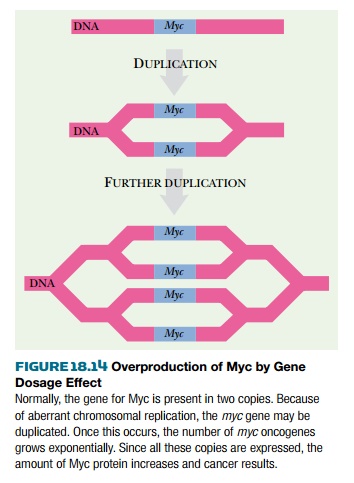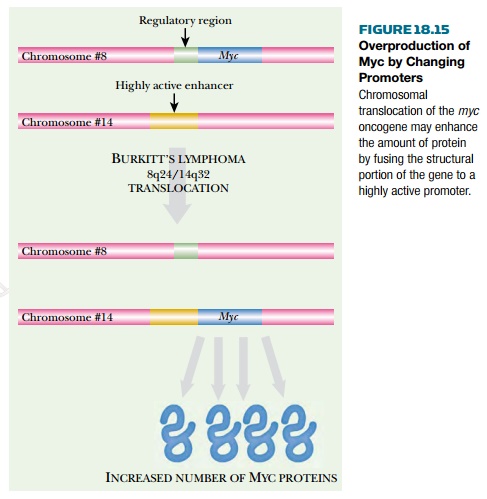Chapter: Biotechnology Applying the Genetic Revolution: Molecular Biology of Cancer
The Myc Oncogene-Overproduction of Protein
THE MYC ONCOGENE—OVERPRODUCTION OF PROTEIN
Some oncogenes are due to mutations
that alter the structure of a protein such as Ras. Instead of a hyperactive
mutant protein, many other oncogenes suffer changes that vastly increase the
amount of the protein formed, although the protein itself is not changed.
A well-known example is the myconcogene,
which encodes a transcription factor involved in switching on several other
genes involved in cell division. A Myc
protein overdose can occur in two ways. Some myc-dependent cancers result from chromosomal changes in which the myc gene is duplicated many times.
Instead of the normal two copies, 50 to 100 copies may occur because of
mistaken duplication of the segment of DNA carrying the myc gene (Fig. 18.14). The Myc protein will then be overproduced by
50- to 100-fold, too.

Alternatively, the number of copies
of the myc gene may remain unchanged,
but their regulation may be altered. In Burkitt’s lymphoma, a rare chromosomal
translocation swaps segments of two unrelated chromosomes. This separates the myc structural gene from its own
regulatory region and fuses it to the highly active promoter of another gene
(Fig. 18.15). The Myc protein is now produced continuously in substantial
amounts instead of being strictly regulated as before.
Mutations in myc are among the most common in mammalian cancers. Most types of
human cancers show overexpression of Myc, although the frequency differs
considerably from one type of tumor to another. In particular, mutations in myc tend to occur during the later
progression of many cancers, including those of lung, breast, and ovary.

Related Topics